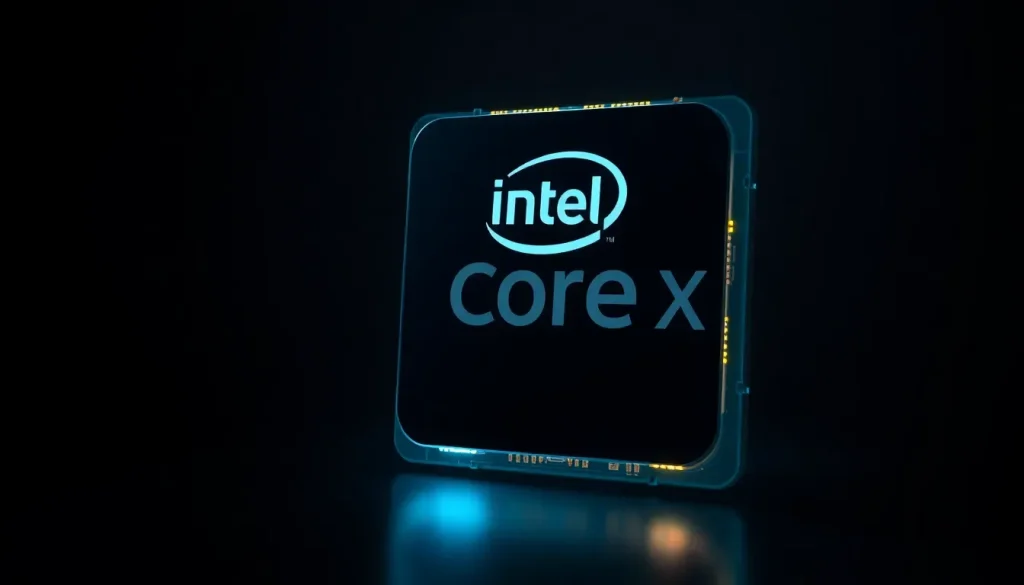Intel Core Ultra X: nuevos nombres para las CPU Panther Lake

As the tech world eagerly anticipates the release of Intel's upcoming Panther Lake CPUs, whispers of name changes and new configurations have begun to circulate. With the introduction of the Core Ultra X series, Intel appears poised to reshape its product lineup significantly. The implications of these changes are vast, and understanding them is crucial for consumers and tech enthusiasts alike.
In this article, we will explore what Panther Lake is all about, delve into the specifications of the new CPUs, and discuss what these changes mean for the future of computing.
Understanding Intel's Panther Lake CPUs
Intel's Panther Lake represents a pivotal moment for the company, marking its entry into the next generation of processor architecture. With a focus on enhancing both performance and efficiency, the Panther Lake CPUs are expected to integrate advanced features that cater to a wide range of users, from gamers to content creators.
This new family of processors is rumored to utilize a hybrid architecture, combining high-performance cores with energy-efficient ones. Such a design aims to optimize power consumption while delivering exceptional speed for demanding applications.
Intel Panther Lake will be branded as Core Ultra X
The most notable change in the upcoming lineup is the rebranding of Intel's CPUs to Core Ultra X. This shift not only reflects a new naming convention but also suggests an evolution in their technology. Recent leaks indicate that the new series will feature models such as:
- Ultra X7 368H
- Ultra X7 358H
- Ultra 5 338H
- X9 388H (the flagship model)
Each of these models is designed to fulfill different needs, with the Ultra X7 368H expected to offer a balanced mix of performance and efficiency, making it ideal for mainstream users. Its specifications, including 4 performance cores, 8 efficiency cores, and a robust integrated GPU, position it as a strong contender in the market.
Core Ultra specifications: What to expect
The Ultra X series promises impressive specifications that push the boundaries of what is currently available. According to leaks, some of the standout features include:
- Performance cores (P-Cores) reaching speeds of 5.0 to 5.1 GHz.
- Integrated GPU (iGPU Xe3) capable of hitting frequencies close to 2.5 GHz.
- Hybrid configurations with a mix of performance and efficiency cores to optimize task management.
For example, the Ultra X7 368H is expected to have:
- 4 P-Cores
- 8 E-Cores
- 4 Low Power Efficiency Cores
- 12 Xe Cores for enhanced graphics performance
This combination could offer users a robust experience, especially for those utilizing laptops without dedicated graphics cards.
The flagship model: Ultra X9 388H
Intel is expected to reserve its best technology for the Ultra X9 388H. Positioned as the top-tier processor in the Panther Lake series, it is rumored to reach speeds of 5.1 GHz, which would make it particularly appealing to gamers and professional creators who require high processing power.
The Ultra X9 388H is being positioned as the “High P-Core” model, suggesting a focus on maximizing performance where it is needed most. However, the introduction of the “Ultra X” branding raises numerous questions about what the “X” signifies. Potential interpretations include:
- A differentiation in graphics capabilities.
- A possible indication of neural processing units (NPUs).
- A marketing strategy aimed at justifying premium pricing.
These uncertainties could complicate the buying decision for consumers, especially with Intel's existing naming conventions that already present a complex landscape.
Launch date and market implications
The launch of Panther Lake is set to be a critical moment in Intel's timeline. With the official unveiling scheduled for October 9, the anticipation surrounding this event is palpable. The Tech Tour will provide the first look at these processors, giving insight into whether the “Ultra X” branding will translate to tangible improvements in performance.
Intel's new offerings will undergo scrutiny, especially as they follow the mixed receptions of previous architectures like Meteor Lake and Lunar Lake. Success with Panther Lake could restore confidence in Intel's capabilities, while failure could result in further erosion of their market share against competitors like AMD.
How does Panther Lake compare to previous generations?
The transition to Panther Lake marks a significant shift in Intel's processor strategy, and it's essential to understand how it compares to earlier models. One crucial aspect is the nodo Intel 18A, which represents a leap in manufacturing technology:
- Enhanced performance per watt, catering to energy efficiency.
- Improved thermal management for better heat dissipation.
- Potential for higher core counts without compromising performance.
This new node is seen as crucial for Intel's ability to compete with AMD's Ryzen series, which has gained a reputation for high performance and efficiency. As a result, Panther Lake will be under scrutiny to see if it can close the gap.
The future of Intel processors
As Intel navigates this new chapter, the implications of the Panther Lake launch extend beyond immediate performance gains. The company faces challenges in clarifying its product lineup and maintaining consumer trust in a rapidly evolving market.
Ultimately, the success of the Core Ultra X series could redefine Intel's approach to processor development and market positioning. With a tech landscape that is increasingly competitive, the stakes are high for Intel, and how they perform in the coming months will be closely watched by industry analysts and consumers alike.
For those eager to see what Panther Lake has in store, you can check out this video for an in-depth look at the latest developments:




Leave a Reply